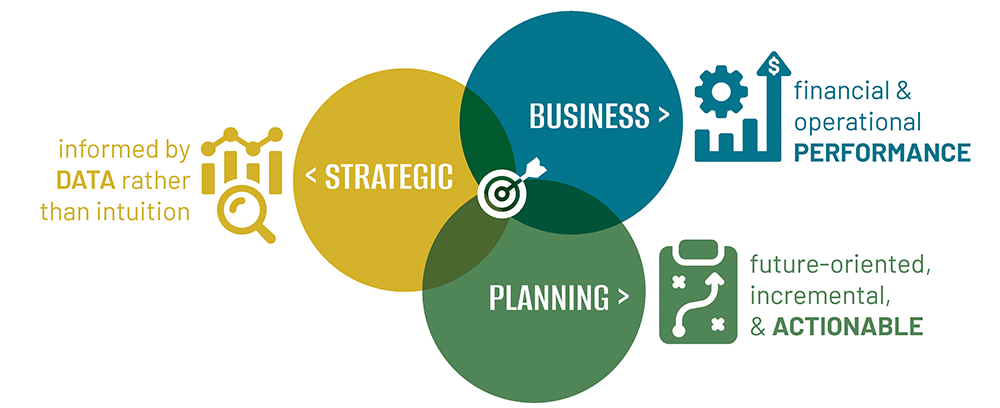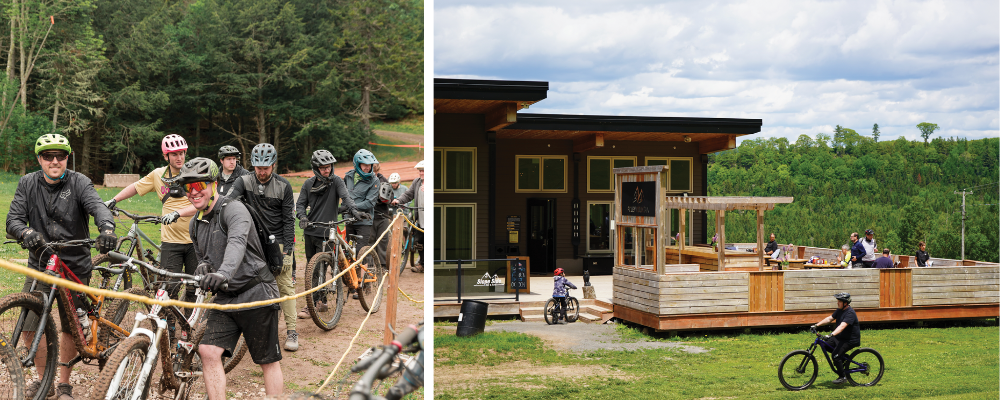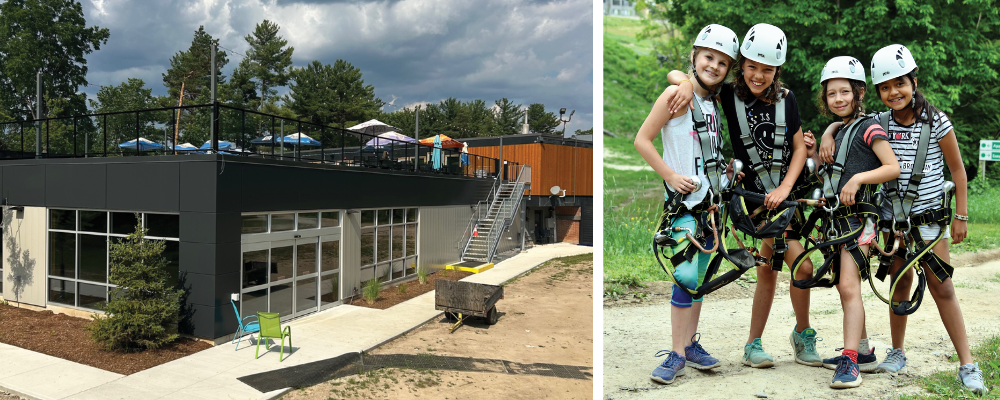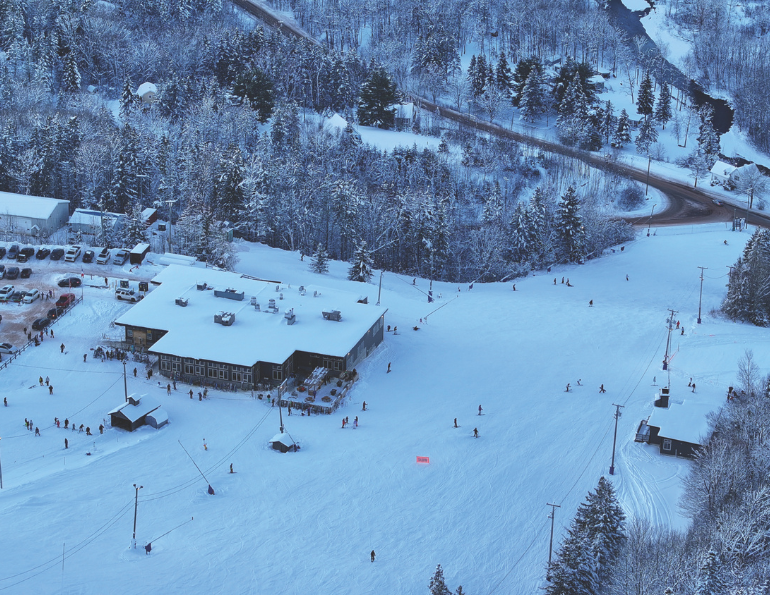How can small areas, or even large ones, find the working capital they need to succeed? By adopting a strategic business plan that focuses on key revenue and expense numbers. This gives ownership and management teams the ability to tighten up operating metrics for maximum efficiency and return on investment.
For example, a strategic business plan can help gauge the value of maintenance vs. capital spending. At Canada’s Poley Mountain, GM Jamie Hare points out that the ski area spent $150,000 in maintenance on snowmaking over a two-year period just to retain its existing capacity. “You’re dumping money down the well and you’re staying the same,” says Hare. “Where are you moving the needle?” Their strategic plan clarified a shift in strategy to investing in new equipment.
Developing such a plan starts with tracking key operating metrics to establish a baseline, and then looking at the potential financial effects of possible improvements. The resulting plan can be used to evaluate an existing operation, help pinpoint opportunities for growth, and serve as a guide for the phasing of any improvements and a tool to help monitor their progress.
 Sound strategic business plans follow fundamental principles, such as being data informed, incremental and implementable, and grounded in business needs. Credit: SE Group.
Sound strategic business plans follow fundamental principles, such as being data informed, incremental and implementable, and grounded in business needs. Credit: SE Group.
In Practice
The following two case studies illustrate key fundamentals and how they can lead to success. The subjects are Boler Mountain, an urban/suburban area in London, Ontario, and Poley, a more rural ski hill near Sussex, New Brunswick. Both mountains would be in the National Ski Areas Association (NSAA) “small” areas category. Both have seen incremental growth in visitation, revenue, and operational performance as a result of following the key strategic business plan fundamentals. And both use their plans as a guide to decisions about future investments.
Boler Mountain
Boler Mountain, located in the middle of an affluent neighborhood, is very literally a community ski hill. The ski area was established by a community-led nonprofit in 1949 as the London Ski Club (renamed in 2010), and for many years focused primarily on winter operations.
In 2012, Boler initiated a 15-year planning process to explore its potential as a year-round community recreational resource. Having dipped its toe into summer, offering a cross-country mountain bike trail network and successful kids’ mountain bike camp, the leadership team hoped to expand its summer business while respecting the core winter operation.
Multi-season transformation. The planning has paid off. Today, Boler is thriving, offering multi-season, multi-generational outdoor recreation to London residents.
“We now have a vibrant summer operation that contributes about 30 percent of total revenue,” says director of operations Marty Thody. “We offer yoga five nights a week, run a boot camp four nights a week, and Zumba classes, too. Our volleyball league plays three nights a week, and mountain biking remains steady.”
The Treetop Adventure Course, says Thody, is Boler’s biggest summer contributor, followed by F&B. “Boler has become a great neighborhood hang-out.”
Poley Mountain
Located in the (Bay of) Fundy region in southern New Brunswick, Poley is a model community ski hill: 32 trails, 660 feet of vertical, and a steadfast group of local owners.
In 1999, the area was on the verge of closing when a group of 40 local shareholders stepped in to preserve it. They established a simple but powerful model: operate like a virtual not-for-profit, reinvest every dollar earned, and never stop evolving. Reinvestment has focused on building a solid foundation for the future, including snowmaking system upgrades, a new conveyor-served beginner area, and a reconstructed base lodge after the original was destroyed in a fire.
Opportunity in summer. The owners have also initiated summer operations to harness the opportunity afforded by its proximity to the Bay of Fundy and within the UNESCO Fundy Biosphere Region, establishing lift-served mountain biking, a small RV park, and promoting the new lodge as a wedding and events venue.
“The plan was built with care, which has allowed us to act with confidence,” says Hare.
Over the past 25 years, Poley has seen 400 percent growth in overall revenue. From 2021 to 2025, revenue grew 35 percent. And last season, operating profit margin exceeded the business plan by almost 10 percent.
Poley’s next chapter foresees significant investments in lifts and snowmaking—the “heart and lungs” of the operation, says president and board chair Michael MacNeil. The ski area’s strategic plan will guide how that unfolds.
“You can grow a business based on summer operations and be sustainable. However, your core business of skiing also needs to be reinvested in and supported,” adds Hare.
 Left to right: A 2022 survey of season pass holders has helped guide investment decisions at Poley Mountain, such as a deeper commitment to mountain biking; A plan to reinvest profit into the operation set up Poley to be able reconstruct its base lodge after the structure was destroyed in a fire.
Left to right: A 2022 survey of season pass holders has helped guide investment decisions at Poley Mountain, such as a deeper commitment to mountain biking; A plan to reinvest profit into the operation set up Poley to be able reconstruct its base lodge after the structure was destroyed in a fire.
Strategic Planning: The Fundamentals
There are several fundamental elements of a good strategic business plan: data analysis, incremental development, budgeting for annual maintenance, and knowing your audience.
Fundamental #1: Collect and Use Your Data
Both the Boler and Poley leadership teams are strong advocates of collecting and using data to drive decision-making. Whether improving efficiency, managing risk, or capitalizing on growth opportunities, having the right numbers—and the ability to measure what matters—is crucial to making informed decisions.
Accessible and useful. Poley has spent four years cleaning up its financial reporting to facilitate faster, data-backed decision-making. As part of this, it recently installed RFID gates to accurately track skier visits (and reduce instances of unpaid access). Hare says he appreciates the ability to measure the things that matter and to know where strengths and weaknesses lie. He uses this data to capitalize on opportunities.
“Department-level accountability has become the new norm,” he adds.
Poley’s financial reporting is organized to correspond to industry-available data, such as the annual NSAA Economic Analysis of United States Ski Areas, so that the team can more easily use it for annual benchmarking. While U.S. data isn’t a perfect comparison for Canadian ski areas, the EA is the most granular report of its kind, making it very useful for ski areas in both countries.
An additional benefit: this tight financial discipline builds and maintains lender confidence.
Data drives decisions. At Boler, Greg Strauss, managing director of administration and finance, has been collecting and analyzing departmental data every step of the way. The performance metrics established in the strategic business plan inform the area’s investment-related decision-making.
New programs are typically established in a modest way. The mantra: start small, watch the data, and expand once the desired metrics are achieved. This keeps operational expenses, especially labor, in line with revenue opportunities, and prevents profit from being eroded by low utilization.
The bottom line: without reliable, detailed financial data, you (and your lenders) can’t make informed, strategic decisions.
 A 2012 strategic plan helped clarify Boler’s business case for bank loans for major capital projects including the 49,000-square-foot chalet it built in 2017. Photo credit: DJ Rycroft.
A 2012 strategic plan helped clarify Boler’s business case for bank loans for major capital projects including the 49,000-square-foot chalet it built in 2017. Photo credit: DJ Rycroft.
Fundamental #2: Plan for Disciplined Incremental Growth
The Boler team has been following a strategic business plan for more than 20 years to guide near- and long-term capital improvement decisions. Its original plan articulated the opportunities for growing winter operations, which led to significant growth in visits. As mentioned earlier, the current plan, initiated in 2012, charts a 15-year course for expanding into a sustainable, year-round operation.
Good data ease anxiety. “The challenge of forgoing capital injection in the core business and directing it to summer is that it’s an unknown,” says Thody. The plan made that step less concerning. It evaluated the risk and quantified market demand. Those steps helped chart a path that harnessed the opportunities for additional summer offerings while maximizing operational efficiency.
Ten years in, Thody says summer business has exceeded projections several years in a row. This greater utilization increased visitation, revenue, and therefore profit, which funds additional capital projects that enhance the guest experience and drive more visitation.
Adapt but remain disciplined. While there have been adjustments along the way, much of the 2012 plan has been implemented, and the area continues to see positive returns. Thody and Strauss continue to refer to the plan as they balance the ongoing challenge of funding annual capital maintenance projects with scheduling the remaining capital investments proposed.
The 2012 plan provided valuable consistency to the area’s decision-making process and helped clarify the business case for getting bank loans for major capital projects, such as the new 49,000-square-foot chalet, built in 2017. The team’s disciplined data collection demonstrates the value and sustainability of the existing operation and projects how the additional investment will continue to maintain and grow this financial viability.
Sometimes, plans evolve. Similarly, MacNeil and the Poley team believe that long-term success lies in a near-term focus on the fundamentals, to maximize the efficiency and returns of the current operation and provide a solid foundation for future growth.
Poley began its strategic business planning in the early 2000s with an assessment of its winter operation and then evolved into long-term planning for year-round business. Industry benchmarking provided insight and clarity: it highlighted issues related to pricing, operational efficiency, snowmaking capacity, and long-term infrastructure planning.
For Poley, the longer-term investment on the horizon is replacing its quad lift, the workhorse of the operation. This replacement project is a five-year goal. The leadership team is currently exploring funding for it. Regardless, MacNeil noted, “you have to have a plan, even if the future is uncertain.”
 Left to right: A new 7,400-square-foot rental shop with a rooftop patio, built in 2024, is the latest big investment as part of Boler Mountain’s plan; A desire to host groups from regional kids’ camps drove the first major investment in Boler’s strategic plan, The Treetop Adventure Course.
Left to right: A new 7,400-square-foot rental shop with a rooftop patio, built in 2024, is the latest big investment as part of Boler Mountain’s plan; A desire to host groups from regional kids’ camps drove the first major investment in Boler’s strategic plan, The Treetop Adventure Course.
Fundamental #3: Budget for Annual Maintenance
The importance of continued, disciplined reinvestment in the operation is foundational to long-term viability. As Hare notes, “The stakes are real. When snowmaking is delayed or lifts go offline, resorts lose not just days on snow—they lose momentum.”
Many resorts share the challenge of aging infrastructure. And when a lift is nearing the end of its lifecycle like Poley’s quad, or snowmaking systems become unreliable, the cost of inaction may be unplanned downtime, lost revenue, or erosion of guest trust, notes Hare.
Follow the data. Planning for major investments in snowmaking and lift infrastructure were central to Poley’s strategic planning process. The cost-benefit between the continued maintenance of old systems and investing in new—including the factors of reliability, energy efficiency, environmental impact, and guest experience—were quantified. The data helped solidify the need for replacement.
Boler’s annual budget accounts for the consistent upgrading and replacement of key operating assets, which is always front-of-mind, says Thody. Likewise, the performance of the ongoing operation is monitored, so that nothing is eroding the profit goals that allow for this critical annual reinvestment.
Fundamental #4: Know Your Audience
Poley: pay attention to guests. Poley’s most defining strength might be its willingness to listen. In the spring of 2022, the resort surveyed its season pass holders. More than 30 percent responded. They asked for a better terrain park, more efficient dining experiences, healthier menu options, stronger social media engagement, and a deeper commitment to summer operations like mountain biking.
“Our job isn’t just to make decisions; it’s to listen and adapt,” says Hare. “The best ideas often come from the people using our hill every day. And the real magic happens when your team feels empowered to act on what they hear.” That spirit of responsiveness has become a core part of Poley’s identity.
Boler: identify opportunities. At Boler, clarifying the unique opportunities within the local and regional marketplace was a foundational component of its strategic business plan and continues to be a key to ongoing success.
The first major investment from the plan, the Treetop Adventure Course, responded to the goal of hosting visits from the many regional kids’ day camps. “When we looked at expanding our camp program, we couldn’t compete. So, we opted for an attraction that would host visits from these outside camps,” Thody explains. The course is also consistent with the “adventure” orientation of Boler’s established brand and helps keep key staff engaged year-round.
Incremental changes add up. Likewise, incrementally added weekly programs at Boler, identified in the plan, continue to grow from local market demand. Following its disciplined, data-driven approach, the Boler team has grown its kids’ mountain bike camps, weekly mountain bike race series, and volleyball league to a point where all have exceeded original expectations.
A bonus, says Thody, has been scheduling the weekly bike race and volleyball league on the same night. “A crowd loves a crowd, and when people came out on this night, the takeaway is, ‘Wow, there’s a lot happening at Boler in the summer.’”
 After reinvesting in winter infrastructure, Poley pursued incremental summer growth with offerings like a small RV park.
After reinvesting in winter infrastructure, Poley pursued incremental summer growth with offerings like a small RV park.
Fundamental #5: Invest in an Engaged Management Team
Both mountains attribute much of their success to the commitment of their management teams. “Poley’s investment in a year-round, engaged team has been a success story,” says Hare. “Having six or seven full-time employees through the summer is a key shift from the past and sets the stage for better strategic execution. Our new CFO has overhauled our financial systems, and we’ve doubled down on HR so we can up our game on people management.”
At Boler, Thody notes that it takes a consistent team to execute a successful F&B offering. Developing a year-round F&B program has allowed the resort to support a talented year-round team. The results? F&B revenue increased almost 100 percent over the past two summers.
Plan to Thrive
Hare’s message to fellow operators of small ski areas is heartfelt. “As a small area, our plan is our power,” he says. “Poley Mountain has proven that small resorts can thrive with clarity, commitment, and courage. If you’re leading a mountain today—big or small—ask yourself: Do we have a plan? Are we listening to our guests? Are we measuring what matters?”
Finally, he says, “Consult your team and partners. Engage your leadership. Prepare your future.”






